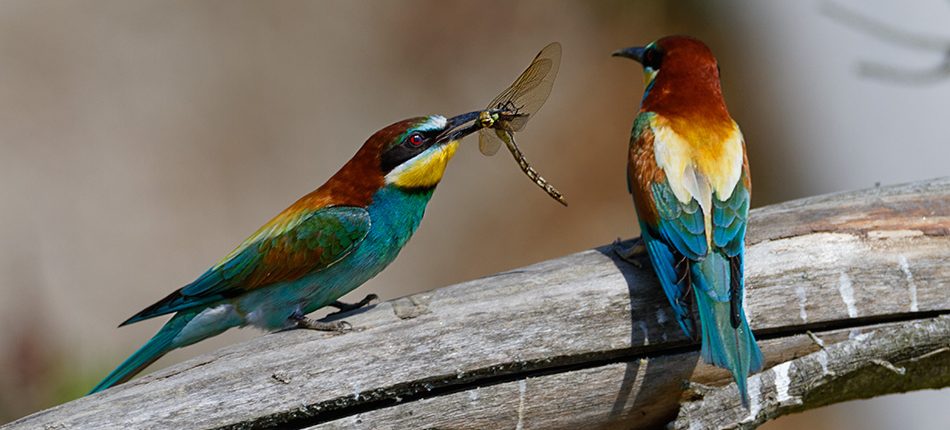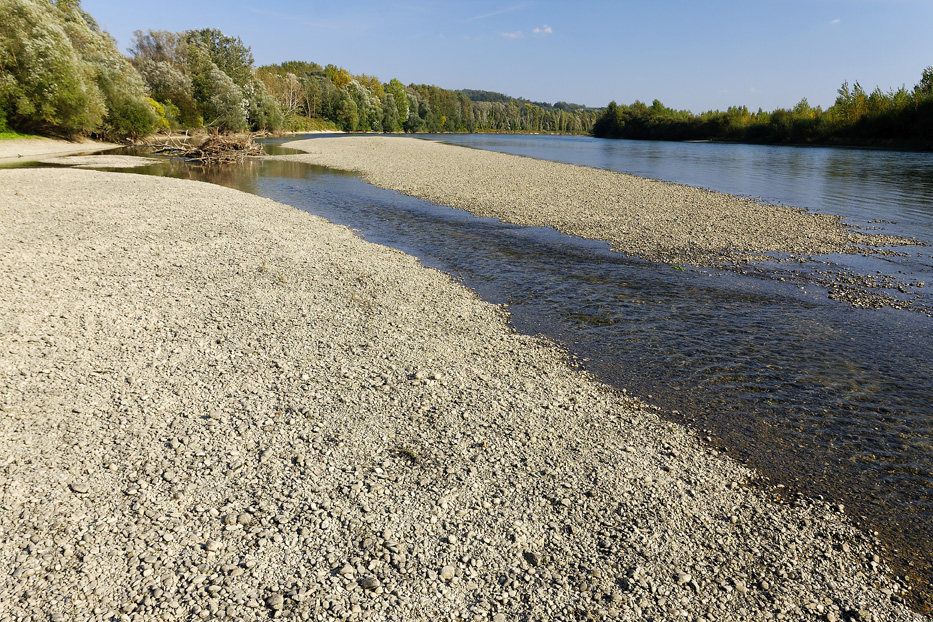The Drava is home to numerous animal species, especially birds. The gravel and sand banks are a key habitat for gravel and sand breeding birds, such as the little tern (Sterna albifrons), the common tern (Sterna hirundo), the common sandpiper (Actitis hypoleucos) and the little ringed plover (Charadrius dubius). The natural steep river banks are home to the sand martin (Riparia riparia), the bee-eater (Merops apiaster) and the kingfisher (Alcedo atthis). The White-tailed eagle (Haliaeetus albicilla) and black stork (Ciconia nigra) are also present in the area. These birds are at risk, as their populations are decreasing due to the loss of habitat and habitat quality, again caused by river regulation and human disturbances.
The Drava also hosts the greatest fish biodiversity in Croatia, with more than 70 recorded fish species. Five of these species are endemic to the Danube basin: the Danube salmon (Hucho hucho), the danubian roach (Rutilus pigus), the balon’s ruffe (Gymnocephalus baloni), the schraetzer (Gymnocephalus schraetser) and the streber (Zingel streber). In addition, the sterlet (Acipenser ruthenus) and the nearly extinct ship sturgeon (Acipenser nudiventris), which was recorded 2 times in the Drava during the last decade, can also be found here. Out of the 70 recorded species, 38 were included in the Red Book of Freshwater Fish of Croatia, including: the ziege (Peleceus cultratus), the asp (Aspius aspius), the weather loach (Misgurnus fossilis) and the European mudminnow (Umbra krameri).
Also for insects, the project area is a favorable habitat. For example dragonflies (Odonata) can be found here and out of the total number of dragonfly species recorded in Croatia (74), almost 60% can be found in the upper course of the Drava. Also, the project area hosts a very large population of the green snaketail (Ophiogomphus cecilia).
The Drava is also home to the beaver (Castor fiber), which was regionally extinct during the second half of the 19th Century, but was successfully reintroduced in the Drava-Mura confluence back in 1996. There are 27 beaver families registered (20% of the total Croatian population). The otter (Lutra lutra) is widely distributed within the project area, with a total of 96 recorded individuals.
Lastly, also large numbers of amphibians can be found here: for example, the Danube crested newt (Triturus dobrogicu), the European fire-bellied toad (Bombina bombina) and the European tree frog (Hyla arborea).



